When you're trying to lower your electric bill, it really comes down to a three-pronged attack: tweaking your daily habits, making your home’s major systems work smarter, and planning strategic appliance upgrades. The best results always come from mixing small, conscious changes with a sharp focus on the biggest energy hogs in your house—especially your HVAC system.
Your Quick Guide to Lowering Your Electric Bill
That feeling when you open your electric bill and wince? Yeah, we've all been there. It’s a common headache for homeowners, and with global electricity use constantly climbing, that pressure isn’t going away on its own.
Much of that increase is driven by a greater need for cooling. In fact, consumption shot up by nearly 1,100 terawatt-hours in 2024 alone, which is more than double the average jump over the last decade. That global trend has a direct impact on our wallets. If you want to dive deeper, you can read the full research about these global energy trends to see the bigger picture.
The good news is you have more control over your home's energy consumption than you think. Getting that bill down isn’t about making huge sacrifices; it’s about making smart, targeted adjustments. This guide will walk you through the most effective strategies you can implement right away, no major renovation required.
High-Impact Energy Saving Actions
The trick is to focus on what gives you the most bang for your buck—the biggest savings for the least amount of effort and cash. A fantastic place to start is just by walking through your house to spot the obvious energy vampires. If you need a hand with that, our comprehensive home energy audit checklist is a great resource.
This infographic gives a solid overview of where to concentrate your efforts.
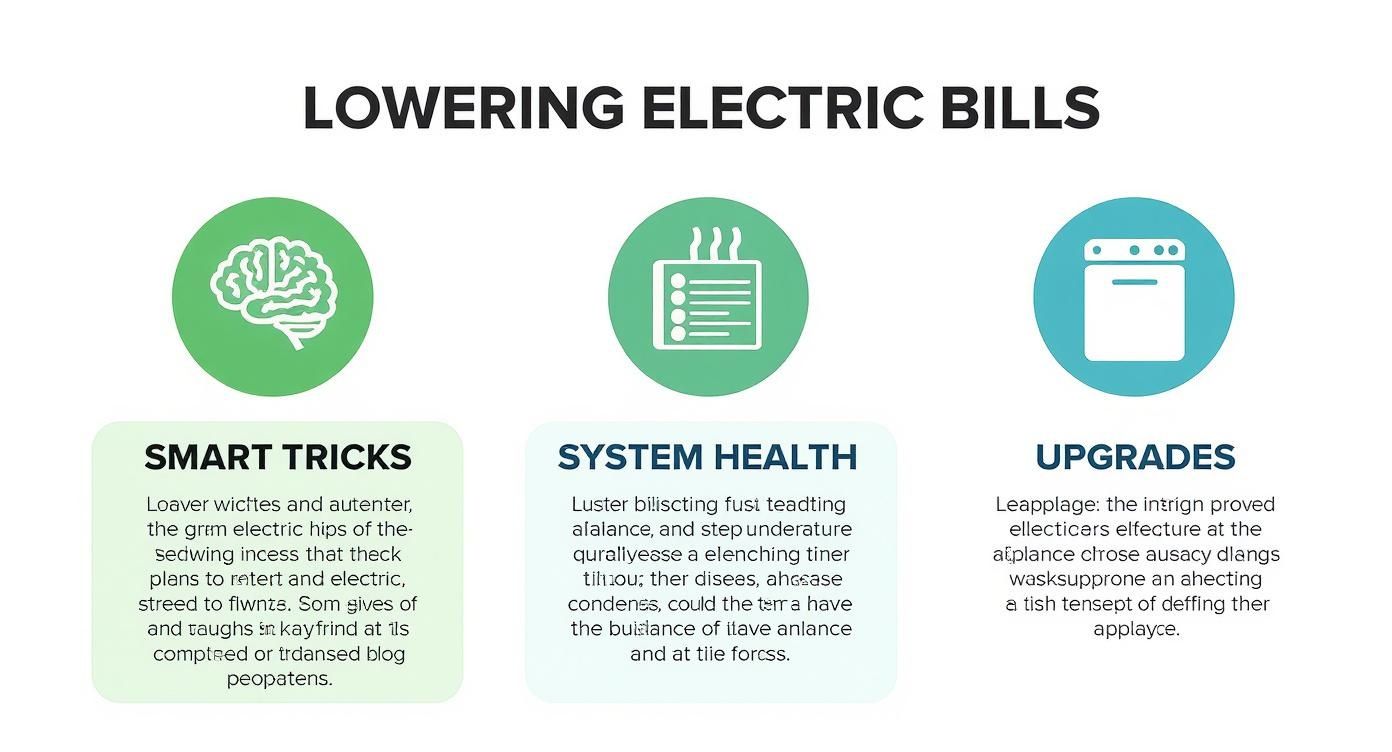
As you can see, a balanced approach that tackles both your daily routines and longer-term improvements is what truly moves the needle.
To help you figure out where to start, let's look at the actions that make the biggest difference.
High-Impact Energy Saving Actions at a Glance
I've put together this quick-reference table to help you compare some of the most popular strategies. It breaks down what you can expect to save, what it might cost to get started, and how much work is involved. Think of it as your roadmap for choosing what makes sense for your budget and lifestyle right now.
| Strategy | Estimated Annual Savings | Upfront Cost | Effort Level |
|---|---|---|---|
| Install a Smart Thermostat | $100 – $150 | $150 – $300 | Low |
| Seal Air Leaks (DIY) | $50 – $200 | $25 – $100 | Medium |
| Switch to LED Lighting | $100+ | $50 – $200 | Low |
| Unplug Electronics | $100 – $200 | $0 | Low |
| Upgrade to ENERGY STAR Appliances | $50 – $500+ | $500 – $2,000+ | High |
This table makes it clear that you don't have to spend a fortune to see real savings. Even simple, low-effort changes can add up significantly over the course of a year, paving the way for bigger investments later on.
Key Takeaway: The best way to lower your electric bill is by combining immediate, no-cost habit changes with planned, high-return investments. Starting small builds momentum for bigger savings down the line.
Master Your Thermostat for Maximum Savings
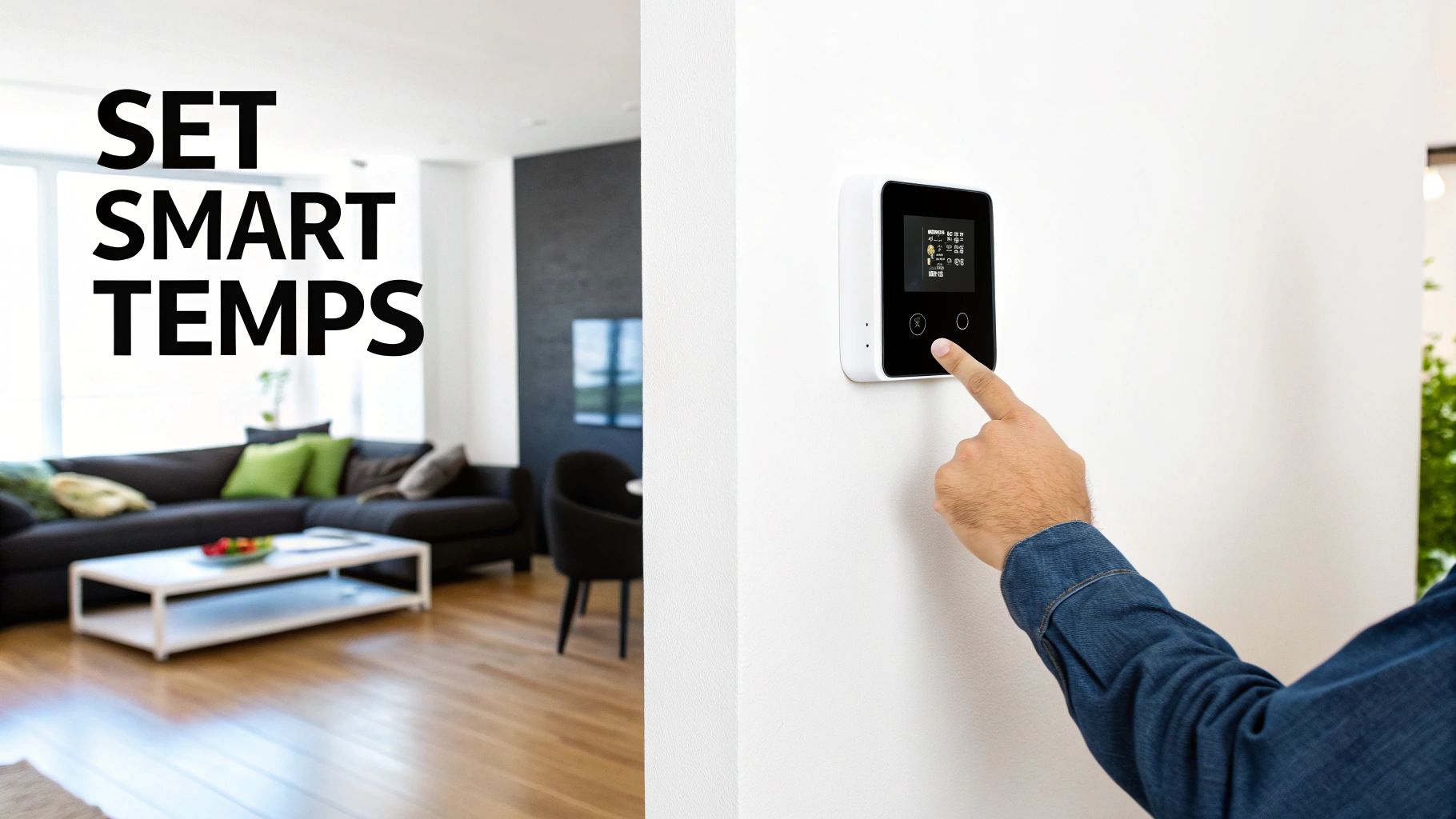
Let's talk about the biggest energy hog in your home: the heating and cooling system. It's the undisputed heavyweight champion of your electric bill, often gobbling up nearly half of your total monthly usage. If you want to make a real dent in your costs, taming this beast is the single most effective place to start.
The old advice to "just turn down the heat" is a good first step, but the real savings come from being smart and consistent. It’s all about creating a system that fits your actual life, not fighting against it. This is where getting a handle on your thermostat—especially if it's a programmable or smart model—can be a total game-changer.
Instead of locking in one temperature 24/7, you can set a schedule that automatically dials things back when you're at work or asleep. This simple shift stops you from pouring money into heating or cooling an empty house, which is one of the most common ways we all waste energy.
Finding Your Ideal Temperature Settings
Everyone's comfort level is different, but there are some solid, field-tested temperature ranges that strike a perfect balance between comfort and efficiency. Think of these as a great starting point for programming your thermostat.
- Summer Savings: Try setting your thermostat to 78°F (26°C) when you're home. When you head out or go to bed, let it climb a few degrees. Every single degree you raise the temperature can trim your cooling costs by up to 3%.
- Winter Efficiency: A comfortable and efficient target for winter days is 68°F (20°C). At night or when the house is empty, dialing it back to around 60-62°F (15-17°C) can cut your heating bill by as much as 10% over the year.
Just imagine a typical weekday schedule. You can program your system to cool the house right before your alarm goes off, let the temperature drift up after everyone leaves, and then kick back on 30 minutes before you get home. It’s a simple, automated routine that puts money right back in your pocket. To see just how quickly these devices pay for themselves, check out the data on smart thermostat energy savings.
Pro Tip: In the summer, a ceiling fan can make a room feel several degrees cooler, which lets you nudge the thermostat up without feeling the heat. Just be sure to turn it off when you leave the room—fans cool people, not spaces!
Essential HVAC Maintenance for Peak Performance
Your thermostat might be the brains of the operation, but your HVAC unit is the muscle. If that system is out of shape and struggling, even the smartest thermostat can't fix the wasted energy. A little bit of routine maintenance makes all the difference.
When you neglect basic upkeep, you're forcing your system to work harder, pull more electricity, and wear itself out faster. These simple tasks don't cost much, but they have a huge impact on your electric bill.
Your HVAC Maintenance Checklist
- Change Your Air Filter Religiously: This is, without a doubt, the easiest and most critical task. A clogged filter chokes the airflow, making your system run longer and harder just to keep up. Take a look at your filter every month and plan on replacing it at least every three months.
- Clear the Area Around Your Outdoor Unit: The big condenser unit outside needs to breathe. Keep a clear space of at least two feet all the way around it. That means trimming back shrubs and regularly clearing away leaves and grass clippings.
- Inspect and Seal Your Ductwork: Leaky ducts are silent killers of efficiency, potentially losing up to 30% of the conditioned air before it ever reaches your rooms. If you can safely access your attic or crawlspace, use mastic sealant or metal-backed tape to patch up any visible cracks or gaps.
Keeping up with this basic maintenance ensures your system runs just as the manufacturer intended. When you pair this with smart thermostat programming, you've created a powerful one-two punch that will knock out high electricity costs for good.
Tackle Energy Vampires and Optimize Your Appliances
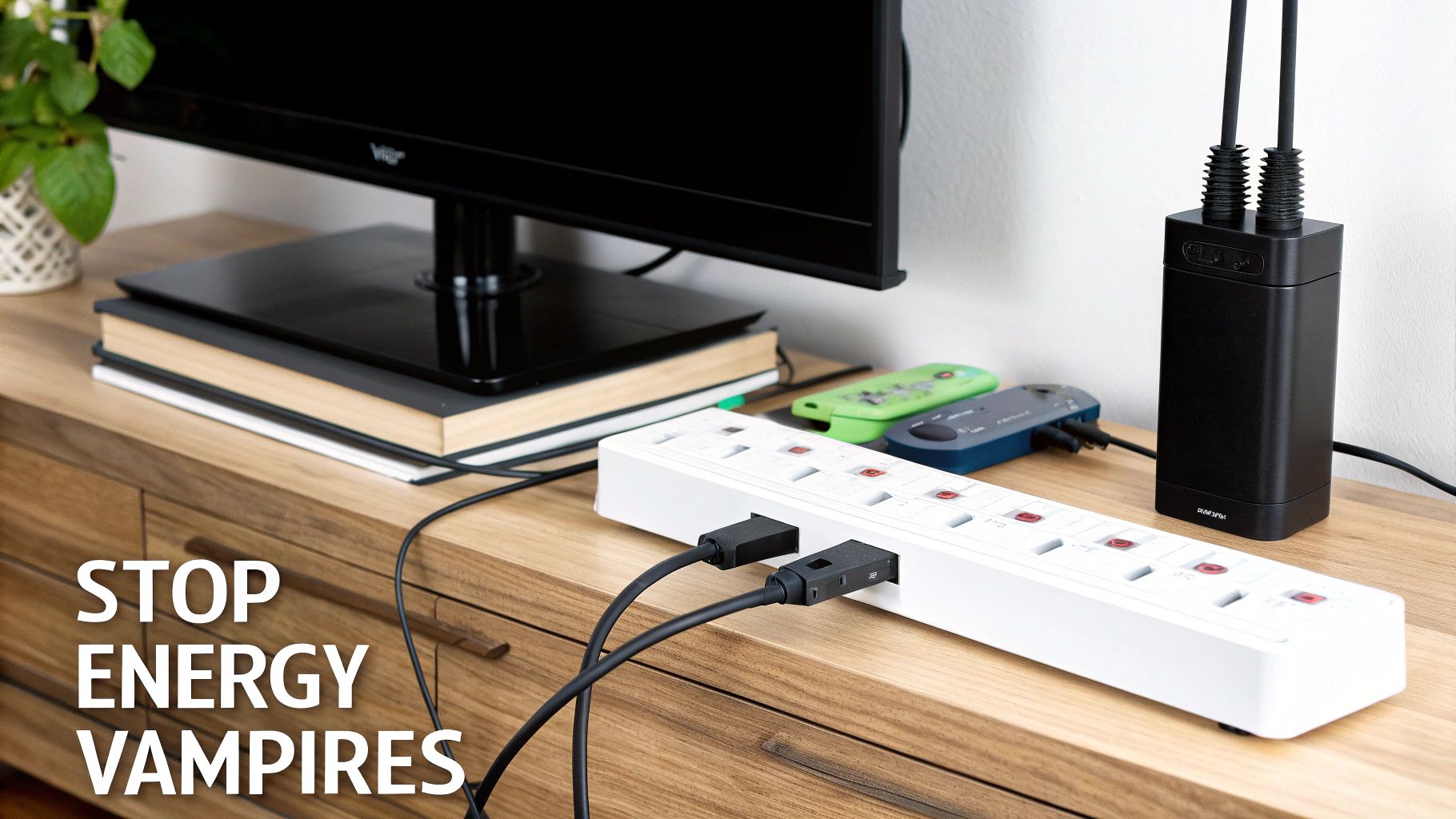
Once you've got your home's heating and cooling in check, the next big opportunity for savings is hiding in plain sight: your everyday appliances and electronics. You’d be shocked to learn how many of your devices are quietly siphoning electricity, even when you think they're turned off.
This sneaky power drain is often called "phantom load" or "vampire power." It comes from all those electronics that sit in standby mode, constantly using a trickle of energy so they're ready to power on instantly.
While one device might not seem like a big deal, the cumulative effect is what gets you. Across your entire home, standby power can be responsible for a staggering 5% to 10% of your total electricity bill. The good news is that you can put a stop to this without spending a lot of money.
Pinpointing the Biggest Phantom Power Offenders
So, where are these energy vampires lurking? Look for anything with a remote control, a continuous digital display (like a clock), or an external power adapter—that little black box on the power cord.
Your entertainment center is almost always the main culprit. Your TV, cable box, game console, and sound system are all designed to spring to life at a moment's notice, and that convenience comes at the cost of drawing power 24/7.
Here are the usual suspects to investigate:
- Living Room: TVs, streaming devices (think Roku or Apple TV), gaming consoles, and soundbars are notorious for their standby power draw.
- Kitchen: That coffee maker with the digital clock? It’s using power. Same goes for your microwave and even some newer smart refrigerators.
- Home Office: Computers, monitors, printers, and especially chargers left plugged into the wall are huge offenders. Even if your phone isn't attached, the charger itself is still pulling a current.
Here’s a simple trick I use: Turn off all the lights at night and do a quick walkthrough of your house. Every little glowing LED is an indicator of an energy vampire at work. You'll be surprised how many you find.
Slaying Energy Vampires with Smart Tools
After you've identified the culprits, you need a plan. Sure, you could run around unplugging everything individually, but that gets old fast. A much smarter approach is to use power strips.
Group related devices—like your entire TV and sound system setup—onto a single power strip. Now, you can kill the power to all of them with one flick of a switch before you go to bed. It’s a simple habit that makes a real difference.
To take it a step further, look into smart power strips. These give you the power to set schedules or control each outlet from an app on your phone. Imagine scheduling your entire home office setup to power down completely every night at 11 PM and back on at 7 AM. That's zero phantom load for eight hours, every single day.
Optimizing Your High-Consumption Appliances
Beyond the silent energy drain, how you use your major appliances can have a massive impact on your bill. These are the heavy hitters in your home, and a few small tweaks to your routine can lead to big savings.
Your kitchen and laundry room are the key battlegrounds. Let's look at how to make these appliances work smarter, not harder.
Work Your Appliances More Efficiently
- The Dishwasher: Make it a rule to only run full loads. A half-empty dishwasher uses nearly the same amount of hot water and electricity as a packed one. And always, always use the air-dry setting. The heated dry function is a massive energy hog.
- The Washing Machine: Believe it or not, about 90% of the energy your washing machine uses is just to heat the water. Switching to cold water for the majority of your laundry is one of the single easiest ways to slash your energy costs. Modern detergents are designed to work great in cold water, so you won't be sacrificing cleanliness.
- The Refrigerator: This is one of the few things in your home that runs constantly. Give it some breathing room! Make sure there are a few inches of space around the top, back, and sides so the coils can dissipate heat efficiently. A less-strained compressor uses less energy. Also, check your door seals with the dollar bill test: if you can close the door on a bill and pull it out easily, it's time to replace the seals.
Making these small, consistent changes really adds up. By attacking both the silent drain from energy vampires and the active consumption of your major appliances, you're hitting your high electric bill from two different angles.
Smart Home Technology That Pays for Itself
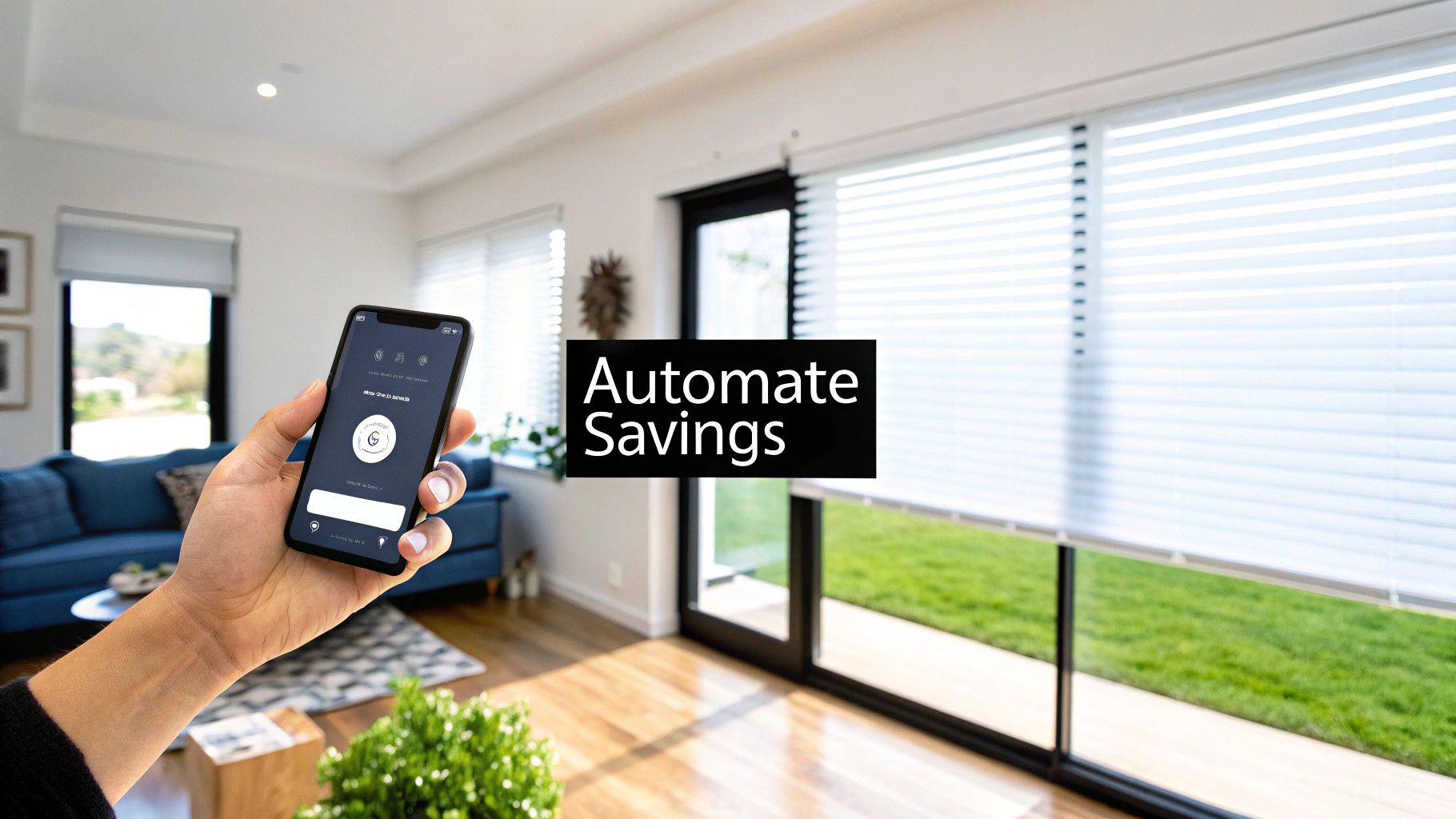
While changing your habits is a great first step, let's be honest: technology can do the heavy lifting for you. Smart home devices have moved beyond simple convenience. They now create a home that actively works to cut down on energy waste, automating savings without you having to think about it.
It's about making your home work for you. Imagine your lights automatically shutting off when a room is empty or the blinds lowering themselves during the hottest part of the day. This isn't some far-off concept; it's technology you can buy today that often pays for itself surprisingly quickly. A small investment in a few key devices can lead to some serious long-term savings.
Creating an Integrated Savings Ecosystem
The real magic happens when your smart devices start talking to each other. A smart thermostat is a powerhouse on its own, but when it syncs up with your lights and motion sensors, the savings really start to compound.
Think of it like setting up simple "if this, then that" rules for your house. For instance, a motion sensor in the living room can tell your smart lights to power down after 15 minutes of no activity. It could also signal the thermostat to ease off, knowing nobody is in the room. This is how you systematically chip away at your electricity usage without lifting a finger. The goal is to make efficiency the default.
Key Smart Devices and Their Impact
Not all smart gadgets are created equal when it comes to saving money. To get the best bang for your buck, you'll want to target the biggest energy hogs in your home first.
Here are a few of the most effective devices I've seen make a real difference:
- Smart Plugs: These are the perfect gateway into home automation. You can plug pretty much any standard appliance into one and instantly gain control via your phone. They're my go-to for taming "energy vampires" like entertainment centers and home office setups that draw power even when turned off.
- Smart LED Lighting: Swapping out old bulbs for smart LEDs lets you do more than just turn lights on and off remotely. You can dim them, set schedules, and create routines, ensuring you never accidentally leave the lights on all night again.
- Smart Thermostats: As we've touched on, these are the heavyweights. A good smart thermostat learns your family's schedule and preferences, fine-tuning your HVAC system so it only runs when it absolutely needs to.
- Smart Energy Monitors: If you're a data person, this is for you. These devices clip directly onto your electrical panel and deliver real-time data on your home's energy consumption. You can see exactly which circuits are costing you the most and take targeted action. For a deeper dive, check out our guide on the top devices to reduce your electricity bill.
To give you a clearer picture of where to start, here’s a quick comparison of some of the most popular options.
Smart Home Device Savings Comparison
| Smart Device | Primary Use Case | Average Cost | Potential Savings |
|---|---|---|---|
| Smart Plugs | Cut standby power to "energy vampire" electronics | $10 – $25 each | 5-10% on related appliance energy use |
| Smart LED Bulbs | Automate and dim lighting, use less energy than traditional bulbs | $10 – $50 per bulb | Up to 20% on lighting costs |
| Smart Thermostat | Optimize heating and cooling based on your schedule and habits | $100 – $250 | 10-15% on heating and cooling bills |
| Smart Blinds/Curtains | Automate natural light and heat management | $200 – $600+ per window | Up to 15% on heating/cooling, varies by climate |
As you can see, the initial cost varies, but even starting with a few affordable smart plugs can begin chipping away at your bill.
A Real-World Scenario: Picture this: You install a smart thermostat, put smart plugs on the TV and computer, and add smart bulbs in the main living area. You then create an "Away" scene in your app. With a single tap as you walk out the door, the thermostat adjusts to an eco-friendly temperature, all the lights switch off, and power is cut to the entertainment center. That's zero wasted energy, every single time you leave.
Ultimately, choosing the right smart tech is about balancing cost with impact. You don't have to automate your entire house overnight. Starting with a thermostat and a couple of smart plugs can deliver a noticeable reduction in your bill, proving that a smarter home truly is a more affordable one.
Long-Term Investments for Permanent Savings
While small habit changes and smart tech can definitely trim your monthly bill, the most dramatic and lasting savings come from bigger, strategic home improvements. These are the kinds of upgrades that permanently change your home's energy profile, turning it from a power-hungry liability into an efficient, comfortable sanctuary.
Making these long-term investments is about more than just saving money. It’s about fundamentally improving your home's performance and value. It means you can finally stop battling drafts in the winter and sweltering rooms in the summer. Let's dig into the upgrades that deliver the biggest returns.
Fortify Your Home's Envelope
I like to think of a house as a thermos. Its main job is to keep the inside temperature stable, no matter what's happening outside. This protective barrier—your walls, roof, windows, and foundation—is what we call the building envelope. When that envelope is weak, your HVAC system has to work overtime just to keep up, sending your electric bill through the roof.
Strengthening this envelope is hands-down the most effective long-term strategy for anyone serious about cutting their electric bill for good.
Here are the key areas I always tell people to focus on:
- Boost Your Insulation: Proper insulation is your home's best friend. I've seen countless older homes that are severely under-insulated, especially in the attic. Adding insulation up there can slash heating and cooling costs by an average of 15%. It's a project with a clear and substantial payback.
- Seal Up Air Leaks: Those little gaps around windows, doors, and electrical outlets might seem minor, but they add up. Think of it like leaving a window cracked open all year long. A little bit of caulk and weatherstripping to seal these drafts is a fantastic, low-cost DIY project that can save you up to 20% on your energy expenses.
- Upgrade Your Windows: If you're still living with old, single-pane windows, you're losing a staggering amount of energy right through the glass. Upgrading to double- or triple-pane, ENERGY STAR certified windows is a significant investment, but the benefits are huge. They don't just slash your energy bills; they also cut down on outside noise and block harmful UV rays.
Upgrade to High-Efficiency Appliances
Once your home's envelope is secure, the next place to look is at the major appliances that run day in and day out. Modern, high-efficiency models are engineered to do the same job using just a fraction of the electricity.
You'll want to focus on the appliances that work the hardest. An old, clunky refrigerator or an inefficient water heater can be a massive drain on your power, silently adding hundreds of dollars to your bill each year.
My Two Cents: When you're thinking about a new appliance, don't just look at the price tag. You have to calculate the lifecycle cost, which includes the initial purchase price plus the estimated energy expenses over the appliance's lifetime. A more expensive, efficient model often ends up being the cheaper choice in the long run.
Here’s where you’ll get the biggest bang for your buck:
The Real-World Savings of Major Appliance Upgrades
| Appliance Upgrade | Key Benefit | Potential Annual Savings | Why It's Worth It |
|---|---|---|---|
| Heat Pump Water Heater | Uses up to 60% less energy than old-school models. | $300+ | It heats water by transferring ambient heat instead of generating it from scratch, which is incredibly efficient. |
| ENERGY STAR Refrigerator | Uses 15% less energy than a non-certified model. | $50 – $100 | Modern refrigerators have vastly superior insulation and more efficient compressors. |
| High-Efficiency Heat Pump | Provides both heating and cooling in one super-efficient unit. | $500+ | It can reduce your electricity use for heating by about 50% compared to electric furnaces. |
The upfront cost can definitely be a hurdle, but don't forget to look for rebates. Many local utility companies and government programs offer substantial incentives and tax credits for these upgrades. These can dramatically shorten the payback period, making a new appliance a very smart financial move.
Consider a Move to Renewable Energy
For the ultimate long-term solution, nothing beats generating your own power. Installing solar panels on your roof is a major investment, but it's one that can potentially wipe out your electric bill entirely and even earn you money back.
The technology has become so much more affordable and efficient over the years. In 2023 alone, the solar industry pumped over $75.5 billion into the U.S. GDP—a clear sign of its growing adoption and economic muscle. Better yet, for every dollar spent on solar tax credits, Americans save an estimated $2.67 in energy costs and tax revenue.
This kind of move shifts you from being a passive consumer to an active energy producer. For a deeper dive into how it all works, you can Compare Solar Panels Vs Traditional Energy. Making this leap is a powerful step toward true energy independence and permanent savings.
Your Questions About Saving on Electricity Answered
When you start looking for ways to lower your electric bill, a lot of questions pop up. It's totally normal. Let's tackle some of the most common ones I hear from homeowners so you can get started with confidence.
What Simple Change Has the Biggest Impact on an Electric Bill?
Hands down, it's adjusting your thermostat. Your heating and air conditioning system is the biggest energy hog in your home, often responsible for almost half of your entire bill. It’s the low-hanging fruit of energy savings.
Just by dialing your thermostat back 7-10 degrees Fahrenheit for eight hours a day (like when you're at work or asleep), you can slash your heating and cooling costs by up to 10% a year. A programmable or smart thermostat makes this automatic, so you don't even have to think about it.
Adjusting your thermostat is the single most effective change you can make. Heating and cooling account for nearly half of the average home's energy use. Setting your thermostat back 7-10 degrees Fahrenheit for 8 hours a day from its normal setting can save you up to 10% a year on heating and cooling.
Do I Really Need to Unplug My Electronics to Save Money?
Yep, you really do. It might seem like a small thing, but that sneaky energy drain from electronics that are turned "off" adds up. It’s often called “phantom load” or “vampire power,” and it's a silent budget killer.
A single phone charger doesn't use much, but when you add up your TV, game console, computer, and all your other gadgets, it can account for a surprising 5-10% of your home's total electricity use. The easiest fix? Plug a bunch of them into a single power strip and just flip one switch to cut them all off completely.
Are Expensive Energy-Efficient Appliances Worth the Investment?
For older appliances, absolutely. If your refrigerator, washing machine, or HVAC system is more than a decade old, upgrading to a new ENERGY STAR certified model is one of the smartest investments you can make for your home.
While the sticker price is higher, the energy savings over the appliance's life will almost always pay for the difference, and then some. Before you buy anything, do a quick search for rebates from your local utility company. They can often knock a significant amount off the upfront cost, making the decision even easier.
How Can I Find Out Which Appliances Use the Most Electricity?
The best way to play detective is with an electricity usage monitor. You can get simple ones that plug into an outlet or more advanced whole-home energy monitors.
These little gadgets give you real-time data, showing you exactly how much power a specific appliance is pulling. You might be shocked to find out that the old garage freezer or your fancy gaming PC is a major culprit. Once you know what's using the most power, you can focus your efforts there for the biggest savings.
Ready to take control of your home's energy use with cutting-edge technology? At Automated Home Guide, we provide expert reviews and practical guides to help you build a smarter, more efficient home. Discover the best devices to lower your electric bill and automate your savings by visiting us at https://automatedhomeguide.com.
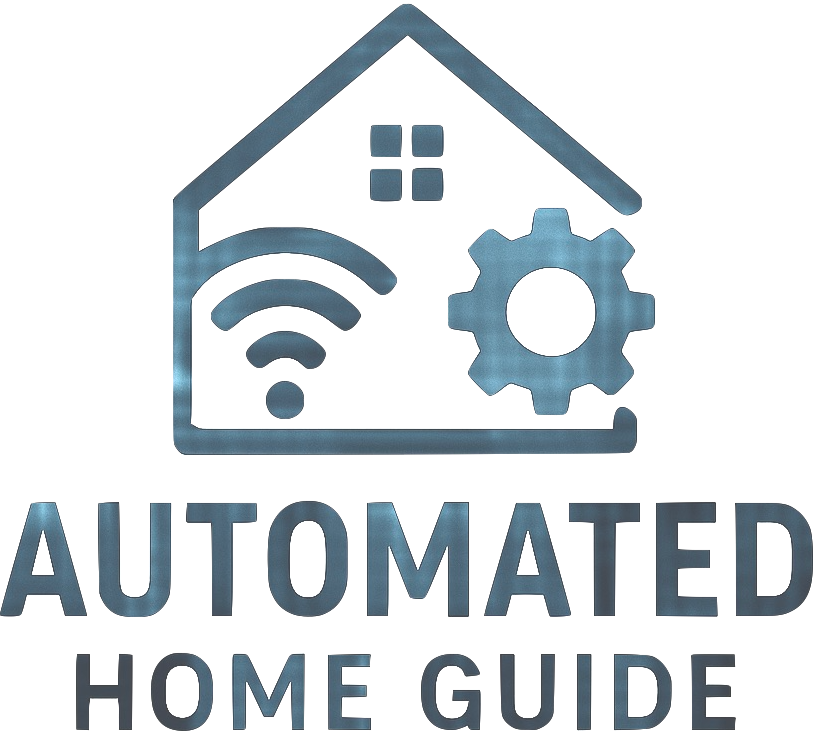
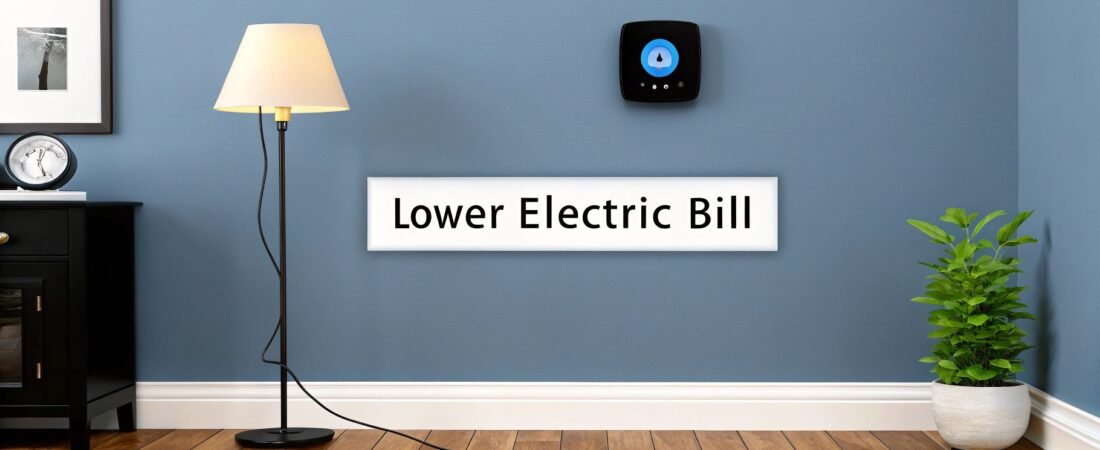
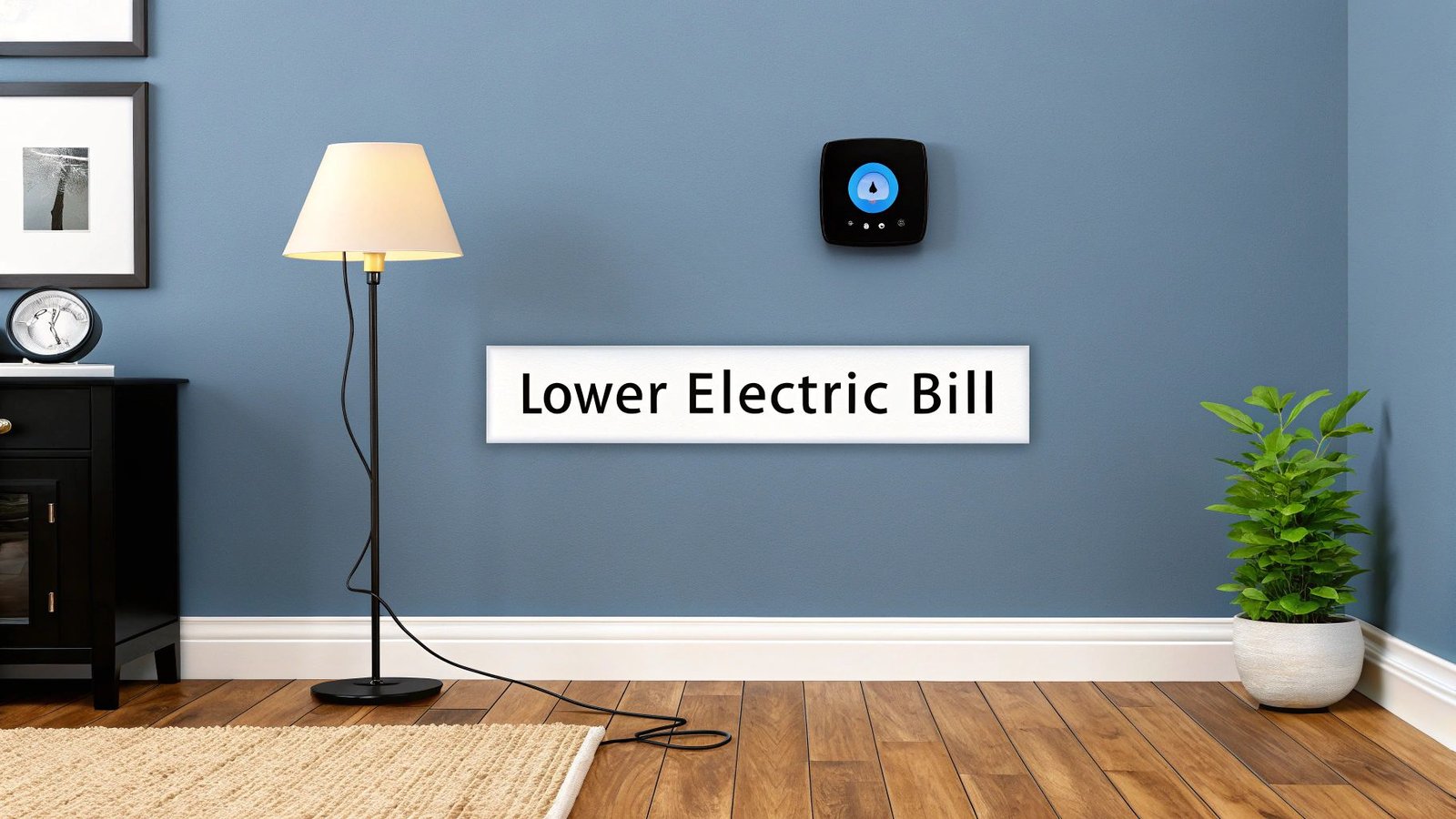
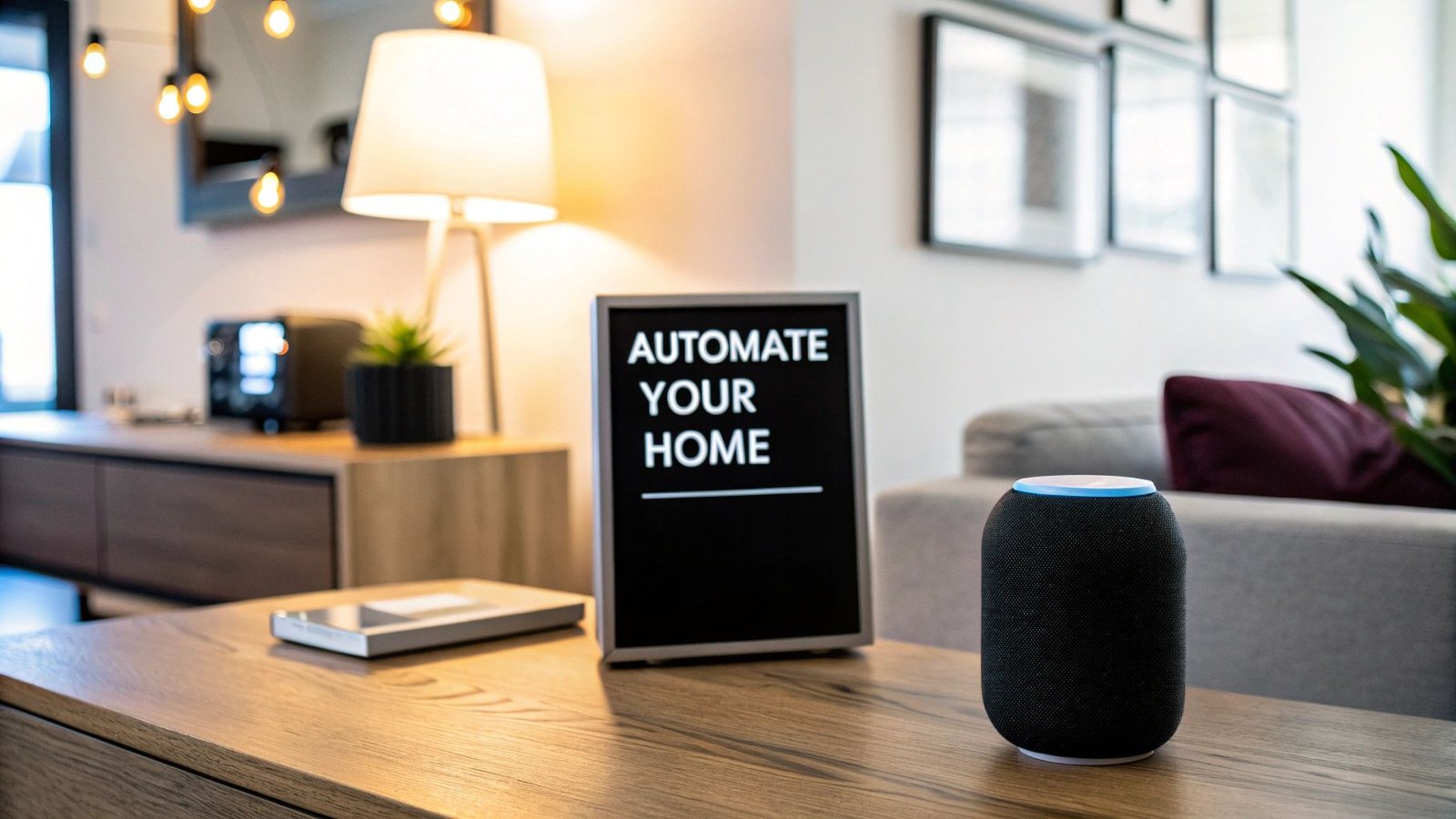
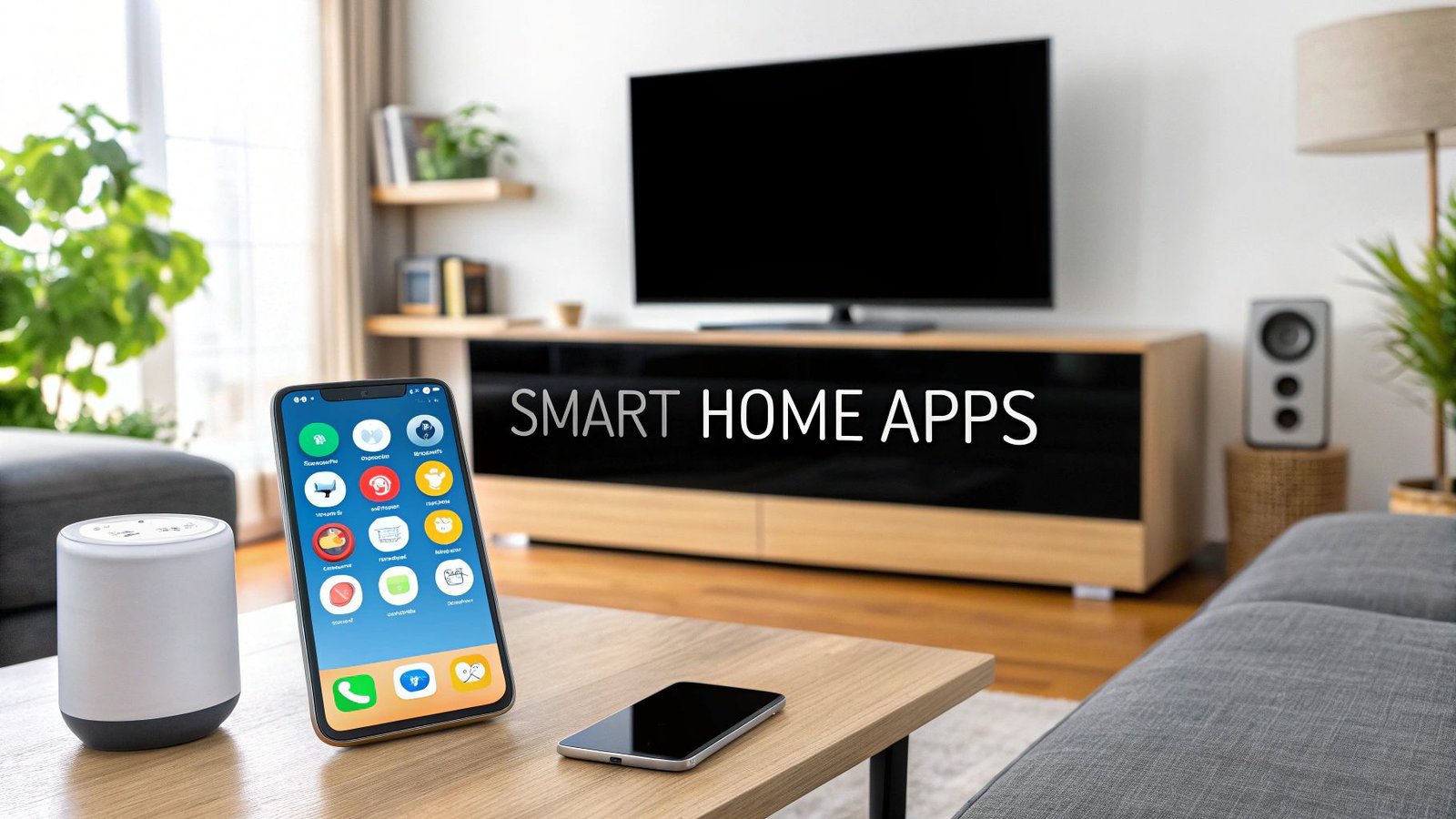

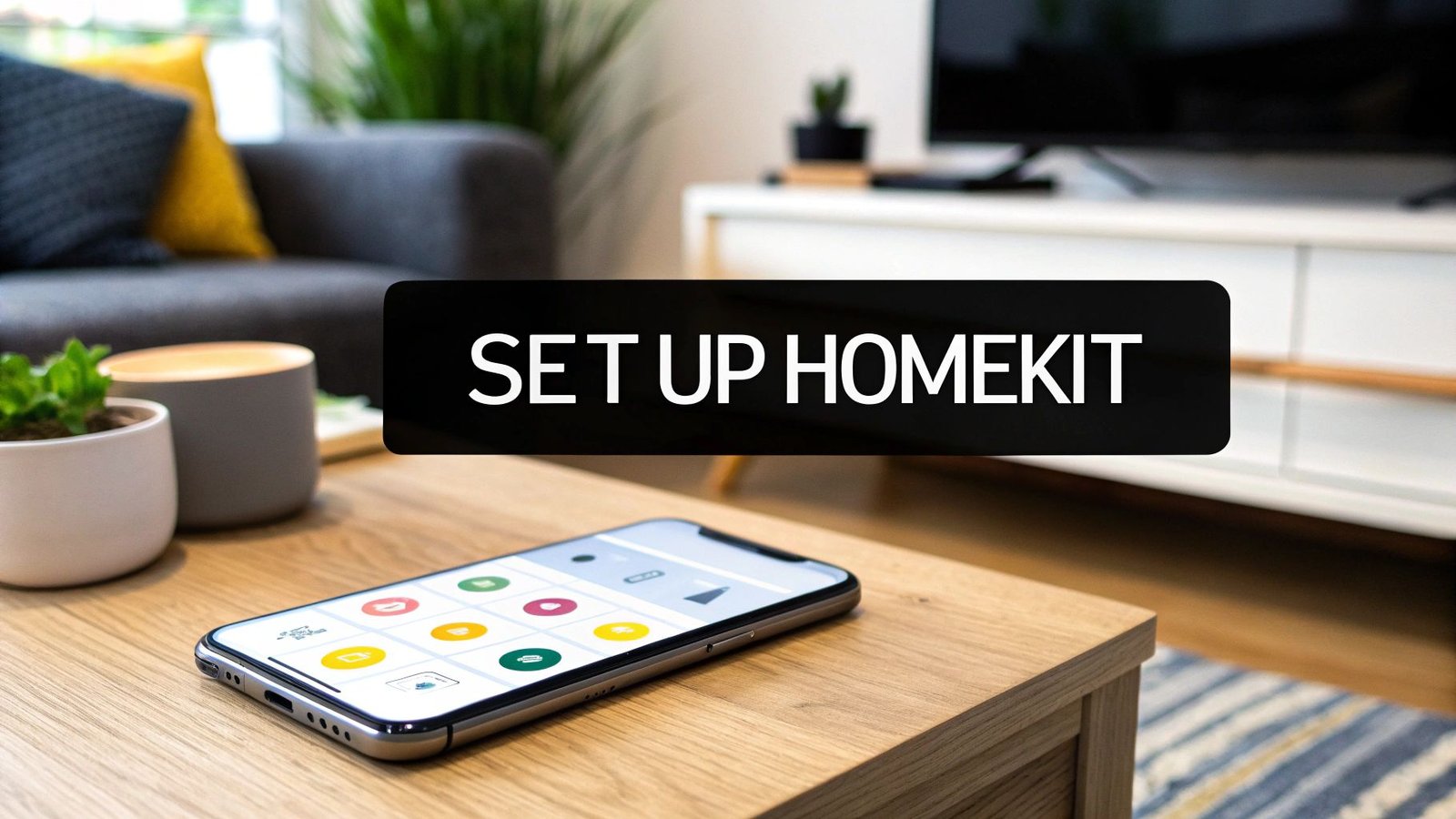
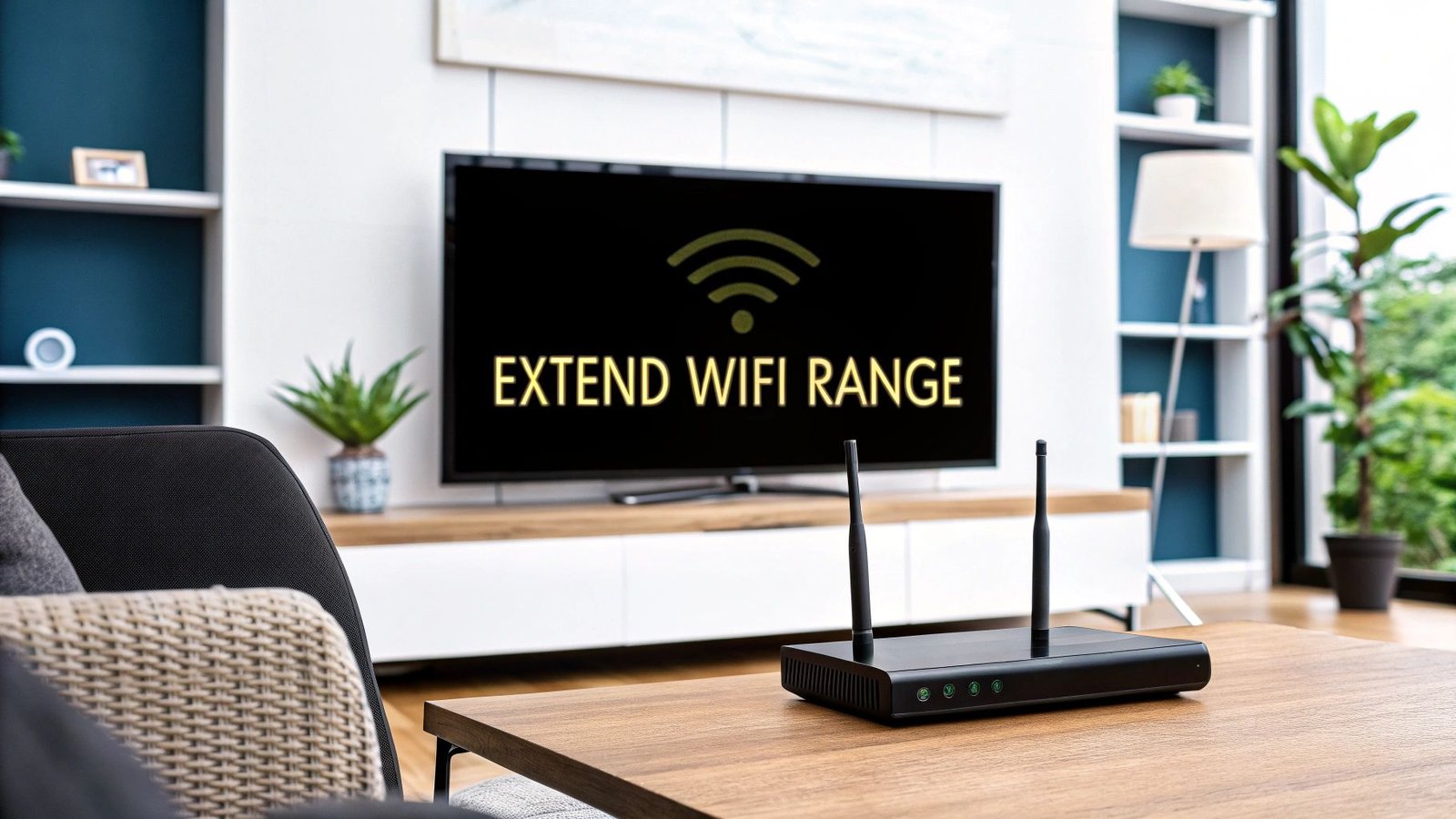
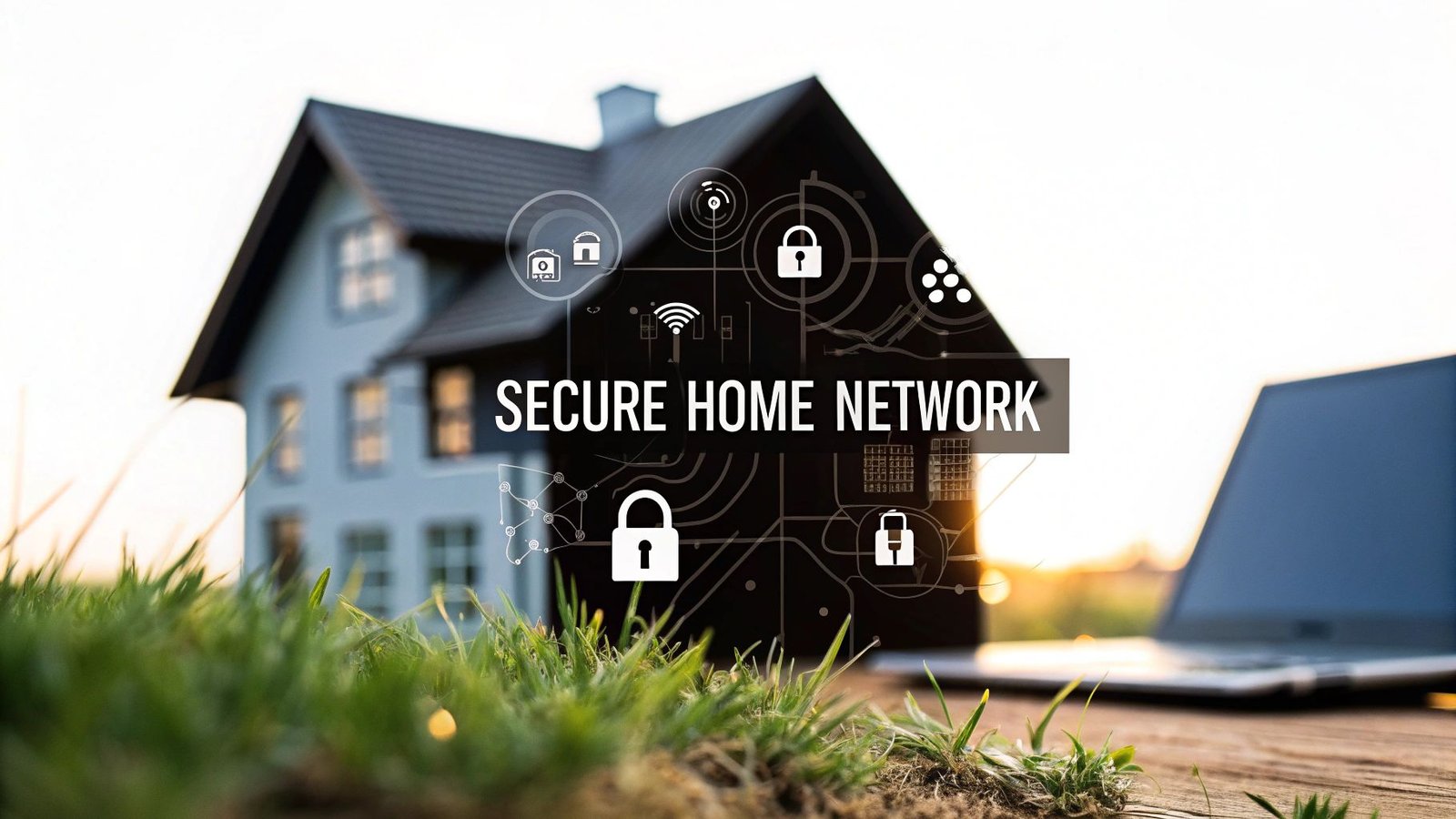
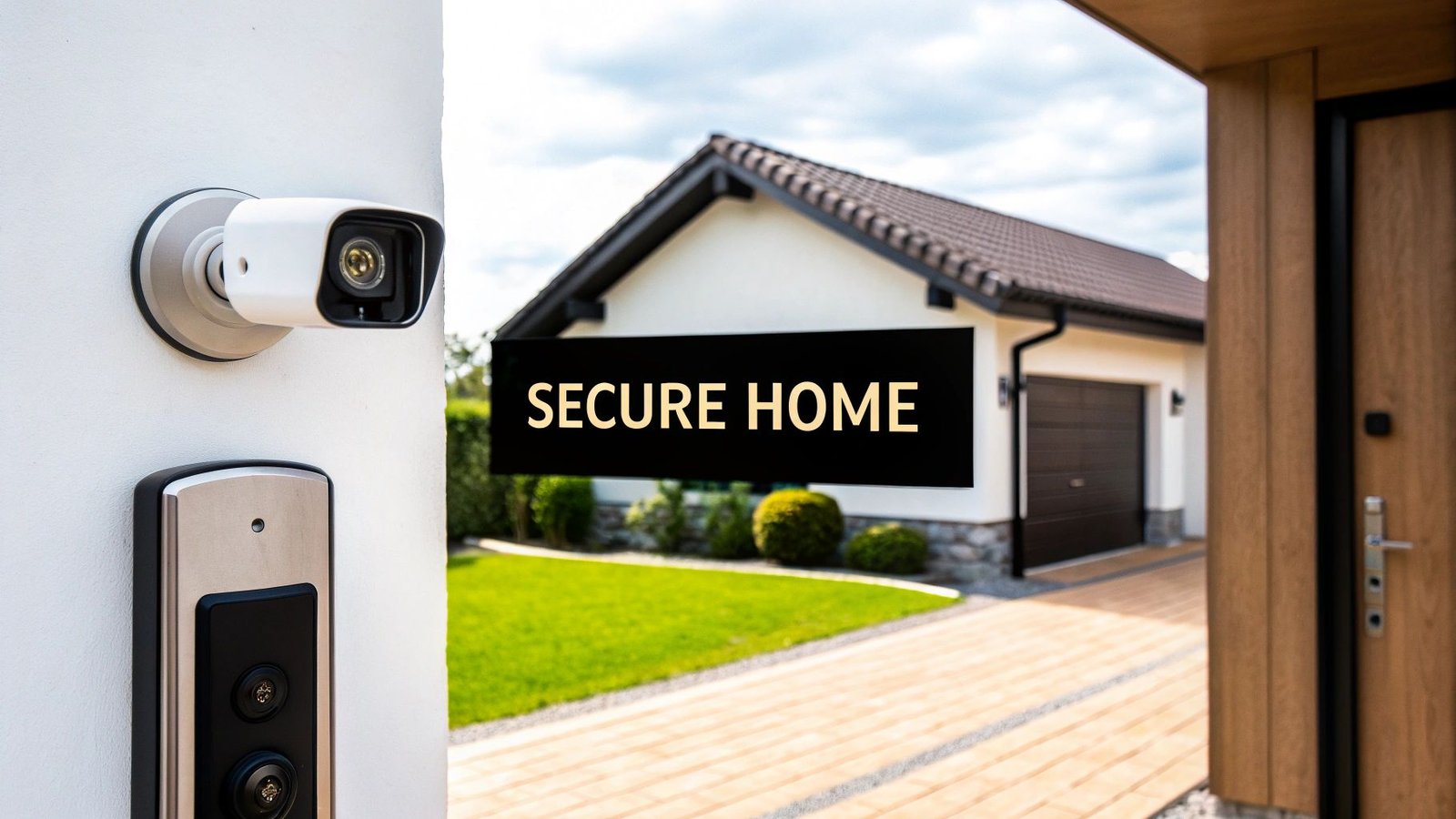
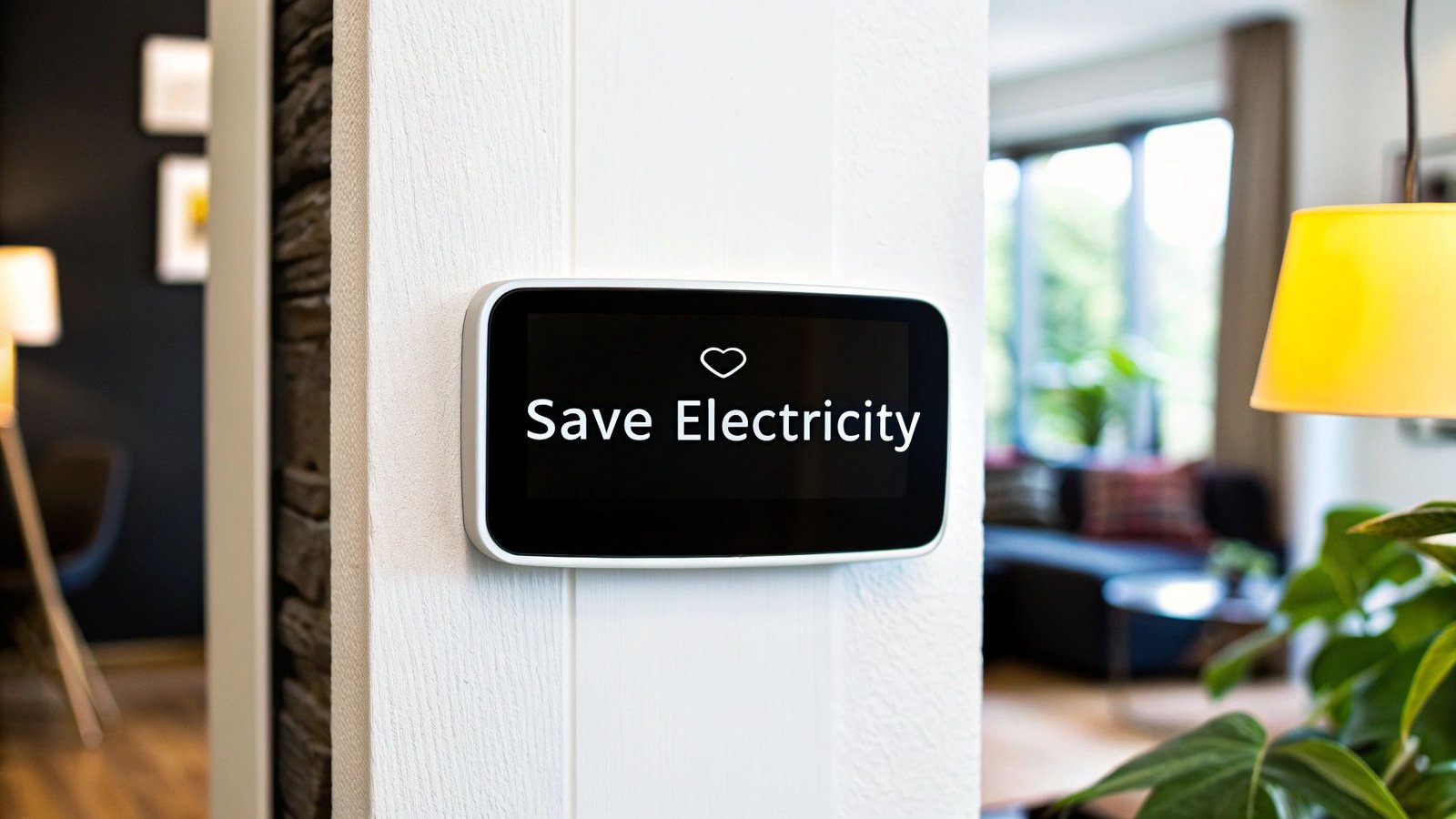
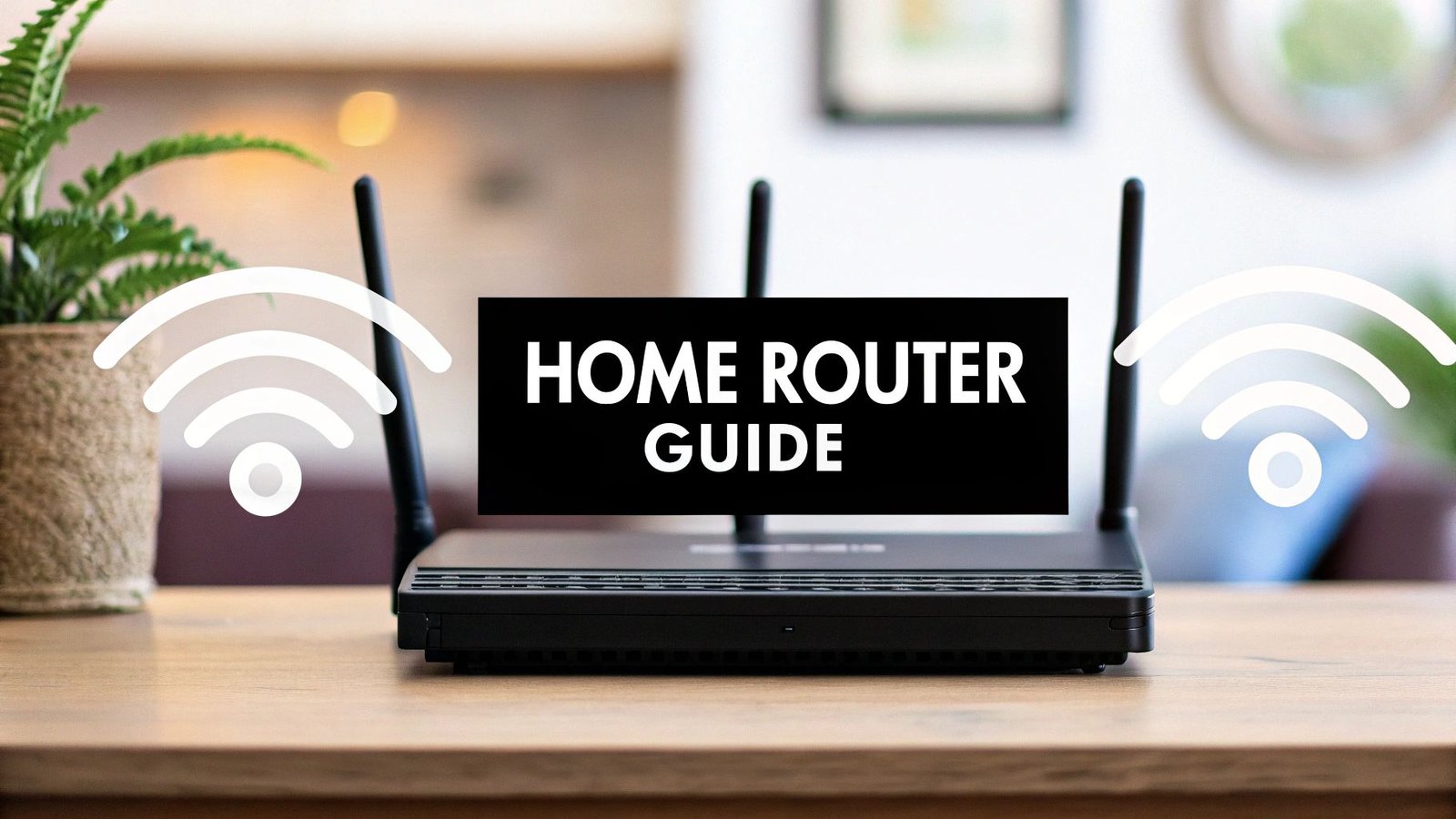
Leave a Reply